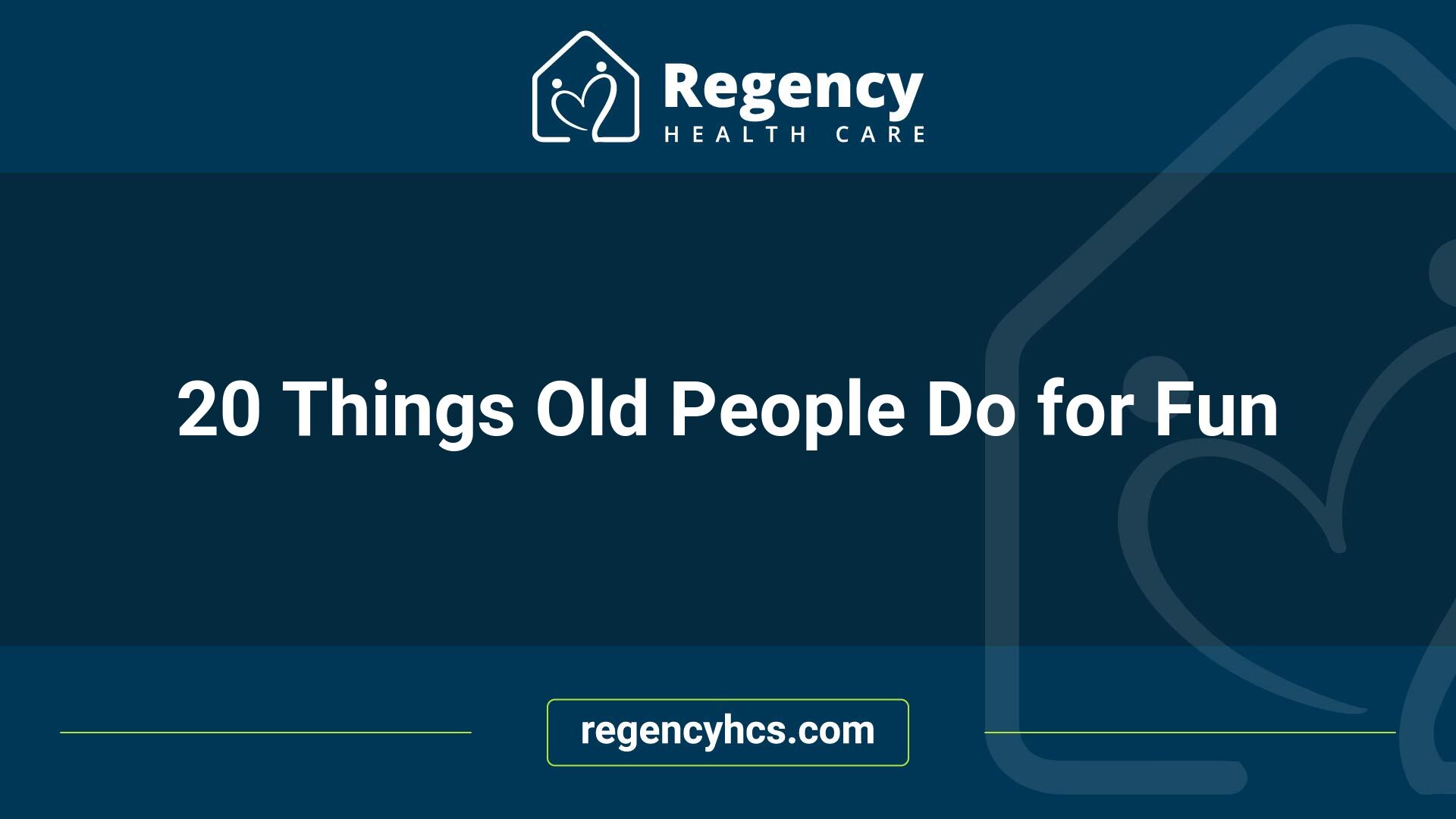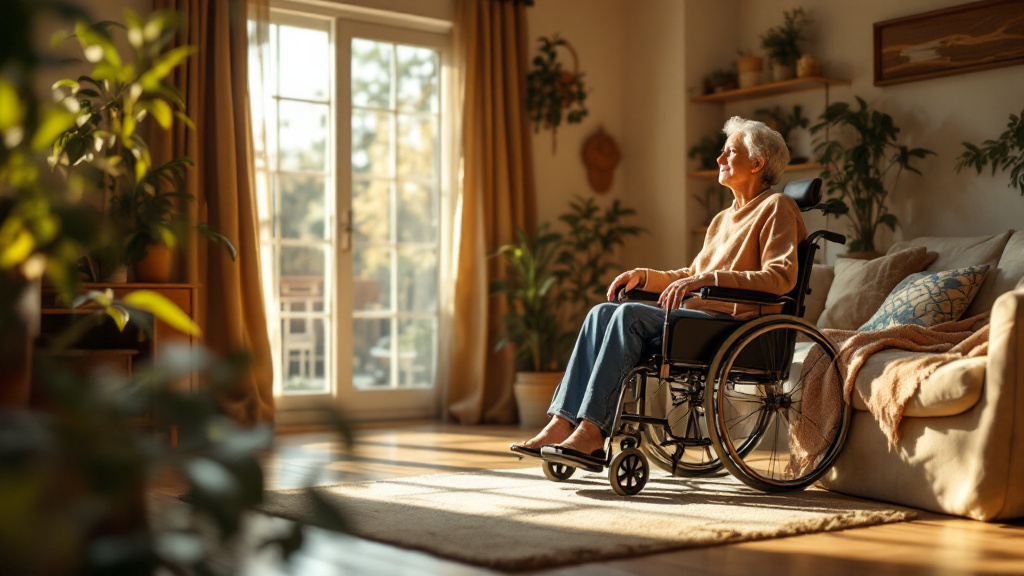Social Participation for Elderly

Importance of Social Engagement
Social participation is a crucial aspect of life for elderly individuals, contributing significantly to their overall well-being. This concept has been increasingly researched for over 20 years, highlighting the effectiveness of community-based activities and interpersonal interactions. Engaging in social activities enables older adults to share resources, participate actively, and find personal satisfaction in their social circles.
Active social engagement plays a fundamental role in combating loneliness and depression, which are common issues faced by seniors. Through social interactions, they can strengthen their emotional health, fostering a sense of purpose and belonging. Activities like trying new restaurants, planning movie nights, or joining local meetups can enhance these interactions, further enriching their social lives.
Impact on Health and Well-being
The impact of social participation extends beyond emotional health, influencing physical health and overall quality of life for seniors. Research suggests that increased social activity correlates with a lower risk of diseases, improved self-care practices, and even reduced mortality rates in older adults. Engaging in fun and fulfilling activities allows elderly individuals to maintain physical fitness and mental sharpness.
Below is a table outlining some key benefits of social participation for the elderly:
Benefit Description
- Reduces Loneliness: Continuous social engagement minimizes feelings of isolation
- Enhances Mental Health: Participation in activities can alleviate symptoms of depression and anxiety
- Improves Physical Health: Engaging in social and physical activities promotes fitness and well-being
- Boosts Self-Care: Social interaction encourages adherence to health guidelines and personal care routines
- Lowers Mortality Rates: Regular engagement in social activities is linked to improved longevity
Seniors can also explore new hobbies such as growing a herb garden, cooking new recipes, or joining a theatre group for self-expression [2]. These activities not only provide enjoyment but also contribute positively to their overall health and happiness.
Physical Activities for Seniors
Incorporating physical activity into daily life is crucial for seniors. Engaging in various exercises not only promotes physical health but also enhances social interaction and mental well-being. Here are some enjoyable and beneficial activities seniors can participate in.
Walking for Wellness
Walking is a straightforward and effective way for older adults to stay active. Aim for at least 30 minutes a day, as regular walking improves heart health and boosts mental well-being. It's an activity that can easily fit into daily routines, whether it’s a stroll in the neighborhood or a walk in the park.
Benefit Description
- Heart Health: Reduces the risk of heart disease
- Mental Health: Enhances mood and reduces stress
- Mobility: Improves balance and coordination
Dancing for Social and Physical Benefits
Dancing serves as an excellent way for seniors to socialize while benefiting their physical health. Participating in dance classes or dancing at home offers both fun and fitness. Whether in a group setting or enjoying personal time, dance can enhance social skills and provide a positive outlet for expression.
Dance Type Benefits
- Line Dancing: Encourages social interaction
- Ballroom Dancing: Improves posture and balance
- Freestyle Dancing: Promotes creativity and joy
Swimming for Low-Impact Exercise
Swimming is a fantastic low-impact workout for seniors. It engages all muscle groups, making it suitable for those concerned about injuries from high-impact activities. Regular swimming sessions can lead to improved endurance and flexibility while providing a refreshing way to exercise.
Swimming Style Benefits
- Freestyle: Enhances cardiovascular fitness
- Backstroke: Improves back strength
- Water Aerobics: Supports joint health
Jogging for Physical Fitness
For active seniors, jogging can be an efficient way to maintain health. Engaging in jogging for at least 30 minutes three times a week can help counter physical decline often associated with aging. Not only does it contribute to physical fitness, but jogging is also linked to increased happiness, whether done outside or on a treadmill [3].
Jogging Frequency Benefits
- 3 times a week: Supports cardiovascular health
- 30 minutes per session: Boosts mental health and joy
Tai Chi for Mind and Body
Tai Chi offers profound benefits, especially for older individuals. This graceful form of exercise involves slow movements and deep breathing, which promotes relaxation and mindfulness. Tai Chi aids in improving strength, easing arthritis pain, and lowering blood pressure, making it ideal for seniors with limited mobility.
Tai Chi Benefits Description
- Breathing: Promotes relaxation and reduces stress
- Strength: Builds core strength and stability
- Arthritis Relief: Eases pain and improves joint mobility
Engaging in these physical activities not only fosters a healthy lifestyle but also encourages social interaction and improved mental health among seniors. Embracing movement is vital for enhancing quality of life as one ages. For more insights on activities for seniors, read about 10 things happy seniors do.
Mobility Options for Older Adults
Understanding mobility options for older adults is essential for enhancing their participation in social activities and overall quality of life. Numerous factors influence mobility and accessibility, which are vital for maintaining independence and fostering social engagement.
Factors Influencing Mobility
Several factors impact the mobility of seniors. These include environmental, social, and individual considerations. Accessibility to local resources, social support, and an individual’s physical or cognitive health status are significant determinants [1]. Below are some primary factors summarized in a table:
Factor Description
- Environmental: Availability of ramps, sidewalks, and public transportation options affecting travel ease.
- Social Support: Assistance from family, friends, and community programs enabling easier mobility.
- Health Status: Physical and cognitive health levels that determine an individual’s ability to drive or use public transport.
These factors collectively influence how freely older adults can engage in activities, such as those listed in the article '20 things old people do for fun', including social events and recreational activities.
Access to Transportation Services
Access to transportation services plays a crucial role in enhancing mobility for older adults. Local mobility systems (LMS) and technology have been identified as critical elements supporting seniors' transportation needs [4].
Age-specific light buses have emerged as a transportation solution within communities, significantly impacting mandatory journeys (like medical appointments) and non-mandatory journeys (such as social gatherings). These services cater specifically to the needs of older individuals, particularly during off-peak hours when traditional transport may be limited.
Transportation Service Benefits
- Light Buses: Designed for seniors, providing easy access to community resources.
- Ride-Sharing Services: Flexible options that allow seniors to travel according to their schedules.
- Public Transit: Often includes discounts for seniors, encouraging continued independence.
Through enhanced transportation options, older adults can remain active and engaged, enabling them to participate in a variety of activities and social interactions. For more insight into managing caregiving and supporting mobility, consider exploring topics like taking care of sick parents or the personal care assistant guide.
Engagement in Community Activities
Participating in community activities is essential for seniors. It fosters connection, promotes well-being, and offers numerous opportunities for fun and fulfillment.
Pre-Pandemic vs During Pandemic Activities
Before the pandemic, seniors engaged in a variety of social and recreational activities. These included visits to museums, libraries, parks, and social events. In 2017–2018, older individuals reported frequent attendance at multiple activity sites, contributing to their overall health and happiness. However, the onset of the COVID-19 pandemic significantly altered these patterns. During 2020, restrictions limited seniors primarily to physical exercise-related destinations. Consequently, they faced difficulties participating in more diverse activities like dining out and attending cultural events.
Activity Type Pre-Pandemic Frequency During Pandemic Frequency
- Museum Visits: High
- Library Visits: High
- Outdoor Activities: High
- Exercise Programs: High
- Social Events: Very Low
Role of Local Mobility Systems
Local mobility systems (LMS) play an integral role in facilitating seniors' access to community activities. Availability of transportation options allows older adults to navigate their neighborhoods and participate in various events. Studies highlight the importance of LMS and technologies in supporting senior mobility, ensuring they can reach essential services and social gatherings comfortably and safely [4].
Strategies for Maintaining Activity
Maintaining an active lifestyle remains crucial for seniors. Here are some effective strategies for engaging in community activities:
- Explore Local Resources: Seniors can investigate local community centers and programs. Many offer classes, workshops, and social gatherings tailored specifically for older adults.
- Utilize Community Transportation: Making use of available transportation services can help seniors access various activities. Local services may offer discounts or specialized services for seniors to encourage their participation in community events.
- Create Social Circles: Forming groups with peers can ensure mutual support and motivation. These groups can organize trips or gatherings, making it easier for members to stay engaged.
- Adopt Flexible Schedules: Participants can focus on activities that accommodate their routines. This flexibility allows seniors to combine fun with convenience.
- Incorporate Virtual Activities: Adapting to technology can open new doors for involvement. Online classes, virtual book clubs, or fitness sessions can keep seniors connected and active irrespective of physical barriers.
By embracing these strategies, seniors can continue to enjoy a rich engagement in community activities while ensuring their well-being and social connections flourish. For more insights on enjoyable pursuits, check out 10 things happy seniors do.
New Activities for Seniors
Engaging in new activities can significantly enhance the quality of life for seniors. These activities can not only provide enjoyment but also foster social interactions, promote health and fitness, and encourage creative outlets.
Enhancing Social Interactions
Social participation among elderly individuals is vital for their health and overall well-being, influencing factors such as disease, mortality rates, and quality of life [1]. Seniors can enhance their social lives by trying new activities. Some suggestions include:
- Dining Out: Exploring new restaurants can be a fun and exciting way to socialize.
- Movie Nights: Organizing movie nights with family or friends can foster connection and entertainment.
- Online Dating: For those looking for companionship, reputable online dating sites can be a great resource.
- Family Visits: Increasing the frequency of family visits helps maintain strong relationships.
- Local Meetups: Joining community meetups can provide opportunities to bond with others who share similar interests.
Health and Fitness Pursuits
Maintaining physical health is crucial for seniors. Engaging in activities that promote physical fitness while also being social can be highly beneficial. Here are some effective options:
- Dancing: This activity can help seniors maintain an active lifestyle while enjoying a lively social environment. Dancing can be done in classes, clubs, or even at home during leisure hours [3].
- Walking Groups: Joining or forming walking groups can encourage regular exercise and provide social opportunities.
- Fitness Classes: Participating in group exercise classes tailored for seniors can improve strength, balance, and overall health.
Hobbies and Creative Outlets
Creative pursuits can enrich seniors' lives and provide a sense of accomplishment. Common hobbies include:
Hobby Benefits
- Growing a Herb Garden: Connection with nature
- Cooking New Recipes: Encourages creativity
- Building a Computer: Mental stimulation
- Quilting: Stress relief and self-expression
- Joining a Theatre Group: Fostering social connections
- Adopting a Pet: Companionship and joy
By exploring new hobbies or reigniting old passions, seniors can discover new talents and enjoy fulfilling experiences.
Encouraging seniors to engage in social interactions, pursue health-focused activities, and explore creative hobbies can significantly contribute to their happiness and well-being. These actions align with the insights shared in our previous discussions, including taking care of sick parents and general guidelines on the personal care assistant guide.
Fun and Games for Seniors
Online and Physical Game Options
Engaging in games is an enjoyable way for seniors to have fun while stimulating their minds. There are various online and physical game options available that cater to different preferences and abilities. Here are some popular choices:
Game Type Description
- Online Poker: A popular card game promoting social interaction and strategy skills.
- Online Chess: Strategic challenges that can be played against others or computer opponents.
- Shuffleboard: Promotes physical activity and friendly competition.
- Senior Sports Leagues: Organized leagues for various sports, allowing seniors to stay active and engaged.
- Checkers: A classic game requiring strategic thinking, accessible for all ages.
- Cards: Games like Bridge and Solitaire that encourage social interaction and mental stimulation.
- Board Games: Games like Scrabble and Monopoly that encourage creativity, strategy, and socialization.
For additional ideas on activities, visit 10 things happy seniors do.
Mental Stimulation Activities
Mental stimulation is essential for cognitive health in seniors. Engaging in activities that challenge the brain can prevent cognitive decline and improve overall well-being. Here are some options:
Activity Type Benefits
- Puzzles: Jigsaw puzzles, crosswords, and Sudoku improve problem-solving skills and critical thinking.
- Reading: Expands knowledge, reduces stress, and enhances vocabulary.
- Memory Games: Fun games like matching pairs or memory cards that improve memory skills.
- Creative Writing: Journaling or writing stories stimulates creativity and allows for personal expression.
- Learning New Skills: Taking online classes or attending workshops enhances cognitive skills and provides a sense of accomplishment.
These activities not only keep seniors engaged but also enhance their cognitive functions. For more ways to support seniors in staying active and engaged, check resources like the personal care assistant guide.
Income Ideas for Seniors
Exploring income opportunities can be fulfilling for seniors, providing not only financial benefits but also a chance for social engagement and personal growth. Here are two significant categories where older adults may find potential avenues for extra income.
Utilizing Skills for Consulting
Many seniors possess a wealth of knowledge and experience from their previous careers that can be effectively leveraged for consulting. This could involve providing guidance in their field of expertise across various industries. For example, a retired teacher might offer tutoring services, or an experienced manager might help businesses streamline operations.
Seniors can also look into other consulting opportunities such as:
Area of Expertise Potential Consulting Services
- Business: Strategy development, marketing insights
- Education: Curriculum development, classroom management techniques
- Finance: Retirement planning, budgeting advice
- Health: Wellness coaching, nutrition consulting
This form of engagement allows older individuals to remain active, share their knowledge, and earn a modest income. Seniors can find platforms to advertise their consulting services or use social media to connect with potential clients. To learn about additional employment opportunities, see our guide on taking care of sick parents.
Exploring Financial Opportunities
Seniors have various options to explore financial opportunities that can supplement their income. They can involve a mix of traditional and modern approaches, such as:
- Freelance Writing: Many seniors enjoy sharing their stories or expertise by writing articles, blogs, or even books.
- Brokerage Accounts: Learning about investment options or stocks can provide additional income through dividends or capital gains.
- Part-Time Jobs: Many local businesses hire seniors for flexible roles that accommodate their schedules, reinforcing social ties and providing structured activity.
- Tutoring: Offering tutoring in subjects they are knowledgeable about, particularly to younger generations.
This variety enhances their financial health while allowing older adults to remain socially active and engaged with the community. For more ideas on maximizing finances, consider our articles on the personal care assistant guide or the ultimate guide on Medicare managed care.
By exploring these income ideas, seniors can not only find ways to enhance their financial well-being but also create enjoyment and purpose in their lives.
References
[1]: https://pmc.ncbi.nlm.nih.gov/articles/PMC6969951/
[2]: https://www.vivehealth.com/blogs/resources/
[3]: https://5bridgeshealthandfitness.com/blog/physical-activities-for-seniors/

The Importance of Safety Assessments in Home Care Services
April 16, 2025
Enhancing Home Care Safety Through Rigorous Assessments

Understanding the Services Covered Under the NHTD Program
April 16, 2025
Exploring the NHTD Program: Empowering Independence Through Medicaid

The Role of Medicaid Consultants in Navigating Complex Systems
April 16, 2025
Navigating the Complex Maze: The Indispensable Role of Medicaid Consultants

How to Build Strong Relationships with Home Care Providers
April 15, 2025
Enhancing Caregiver-Client Relationships for Improved Home Care

The Role of Case Management in Medicaid Home Care Services
April 15, 2025
Navigating Medicaid Home Care: The Essential Role of Case Management

The Role of a Personal Assistant in the CDPAP Model
April 15, 2025
Understanding the Functions and Impact of Personal Assistants in CDPAP



